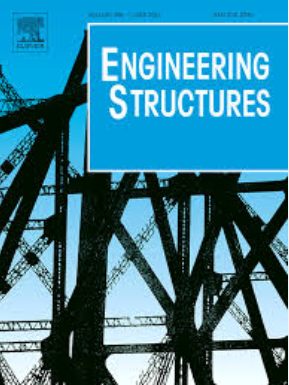Reusability diagnosis method for demolished bridge girders based on topological evolution of load paths
IF 5.6
1区 工程技术
Q1 ENGINEERING, CIVIL
引用次数: 0
Abstract
In this study, a reusability diagnosis method for demolished bridge girders is proposed by evaluating their damage state and future reuse environment. A modified strut-and-tie model (STM) is first established by considering the topological evolution of load paths. Limit failure criteria of the modified STM are given to predict the bearing capacity of demolished bridge girders. Subsequently, classification criteria for damage state and reuse environment are developed based on the bearing capacity and exposure levels during reuse, forming a decision matrix for diagnosing reusability. Finally, the applicability and effectiveness of the reusability diagnosis method are demonstrated through case studies of demolished structures. Results show that the configurations of load paths vary with the increase of shear span-depth ratios. The modified STM can accurately evaluate the bearing capacity, improving the accuracy of damage state assessments and reducing subjectivity in diagnosing reusability.
求助全文
约1分钟内获得全文
求助全文
来源期刊

Engineering Structures
工程技术-工程:土木
CiteScore
10.20
自引率
14.50%
发文量
1385
审稿时长
67 days
期刊介绍:
Engineering Structures provides a forum for a broad blend of scientific and technical papers to reflect the evolving needs of the structural engineering and structural mechanics communities. Particularly welcome are contributions dealing with applications of structural engineering and mechanics principles in all areas of technology. The journal aspires to a broad and integrated coverage of the effects of dynamic loadings and of the modelling techniques whereby the structural response to these loadings may be computed.
The scope of Engineering Structures encompasses, but is not restricted to, the following areas: infrastructure engineering; earthquake engineering; structure-fluid-soil interaction; wind engineering; fire engineering; blast engineering; structural reliability/stability; life assessment/integrity; structural health monitoring; multi-hazard engineering; structural dynamics; optimization; expert systems; experimental modelling; performance-based design; multiscale analysis; value engineering.
Topics of interest include: tall buildings; innovative structures; environmentally responsive structures; bridges; stadiums; commercial and public buildings; transmission towers; television and telecommunication masts; foldable structures; cooling towers; plates and shells; suspension structures; protective structures; smart structures; nuclear reactors; dams; pressure vessels; pipelines; tunnels.
Engineering Structures also publishes review articles, short communications and discussions, book reviews, and a diary on international events related to any aspect of structural engineering.
 求助内容:
求助内容: 应助结果提醒方式:
应助结果提醒方式:


